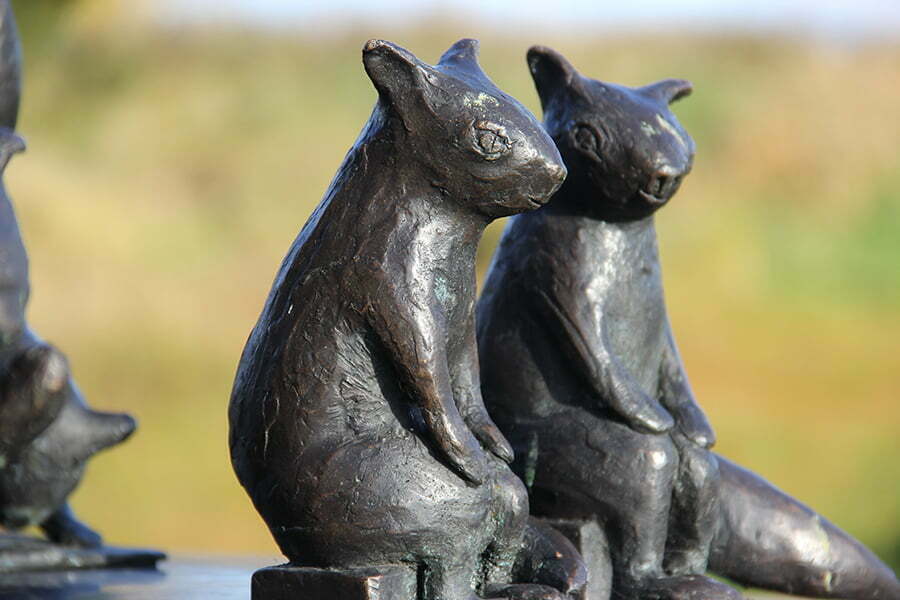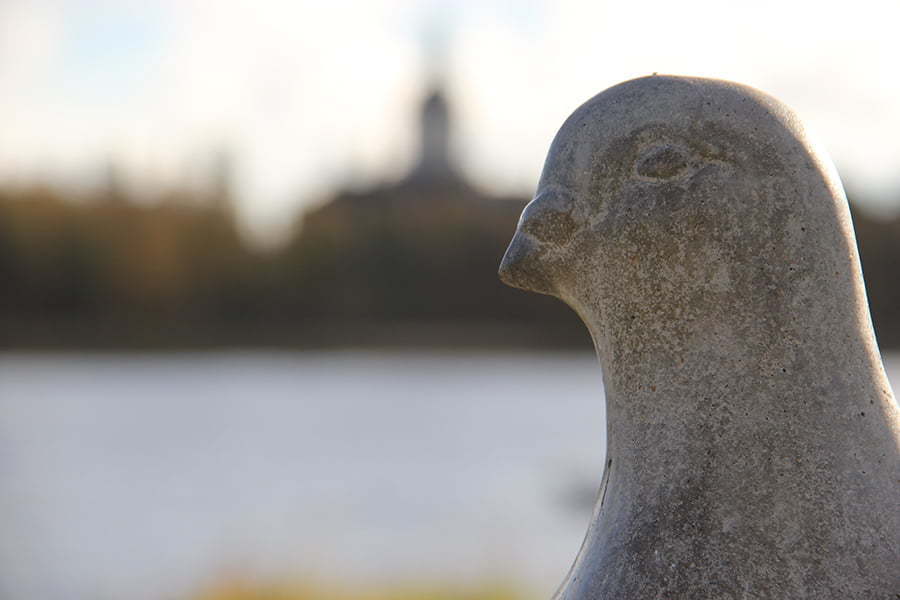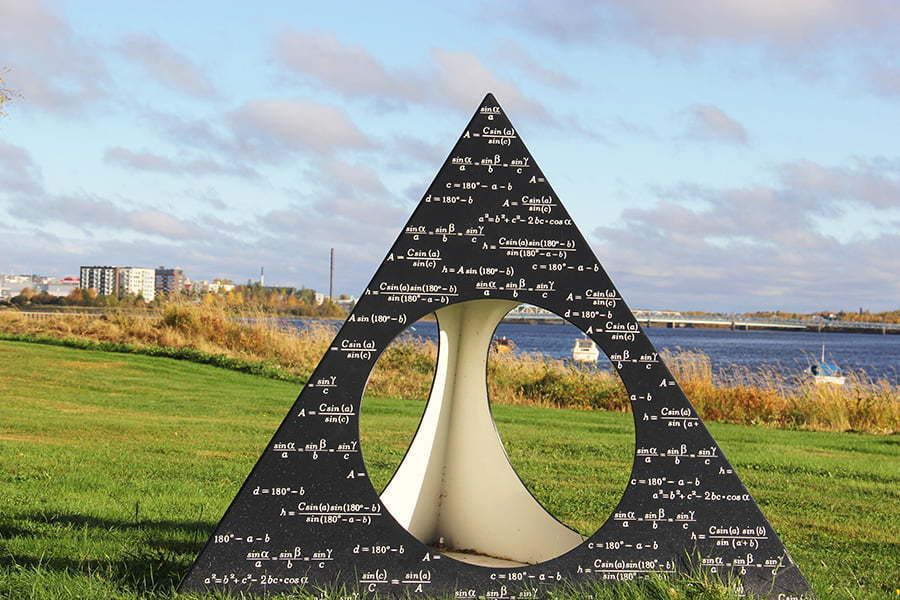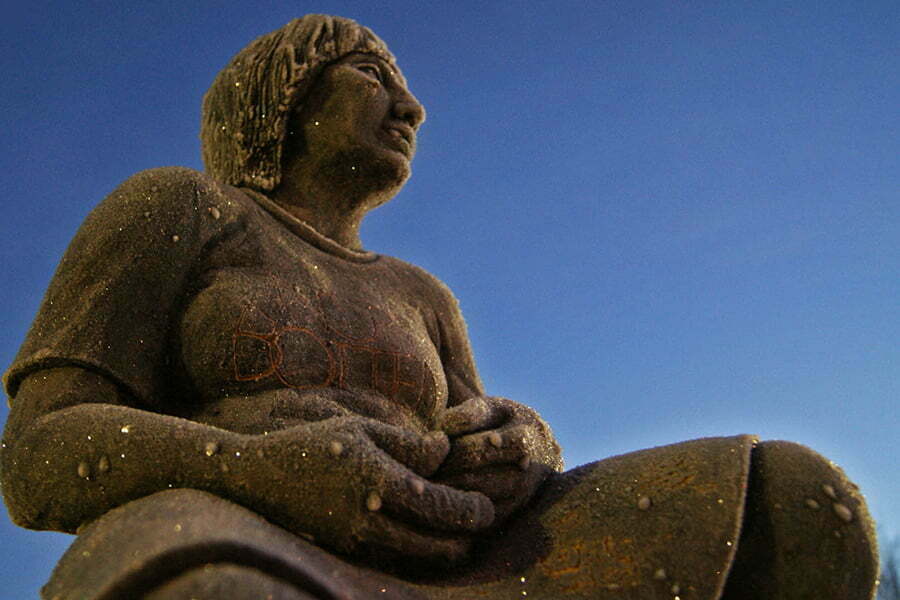Amanda
This statue of the beautiful nymph Amanda is in Haparanda marketplace.
Cholera grave, Salmis
In 1866, a Stockholm ship arrived at the Haparanda harbor in the village of Salmis. The crew and passengers had been taken ill with cholera and they were cared for in a village house. Thirty people succumbed to the disease, as did the county doctor Joshua Wretholm. The grave has been restored and there are signs from the village road. The buildings used as the cholera hospital is also still standing.
Crown Stone
Situated in Kukkolaforsen Rapids besides a Lappish tent. In order to control more easily the state´s interest in taxation, all fixed fishing locations on the river Tornionjoki were inventoried in 1741.
Invalid Monument
Situated in the churchyard. During World War I the International Red Cross exchanged about 75 000 invalids via Tornio and Haparanda. Of the prisoners, who were Austrians, Hungarians, and Turks, 218 died during the transportation between 1914-1918. They were buried in Haparanda.
Kings Stone in Keräsjoki
King Gustav III carried out his coup-d-état in 1772. The farmers of the Alatornio and Ylitornio villages were allowed to “spontaneously” emphasize the influence of the coup-d-état, and its blessings, by raising a monument to show their favor. The marble memorial on a granite base was dedicated with great ceremony in 1775.
King´s Stone
This monument is to be found in the marketplace and was erected to commemorate the visit of King Gustav VI Adolf to Haparanda on 18 June 1952. Memorial for the Peace of 1809 Situated in the customs Parks in Haparanda. The governor of Norrbotten, Curt Boström, unveiled the 180-year celebration statue.
Memorial stone
Situated in the Customs Park. It has been raised as a mark of gratitude for the Swedish volunteers who participated in Finlands War of Independence 1918, The Winter War 1939-1940 and the Continuation War 1941-1944.
Mia Greens park and statue
Mia Green was a photographer in Haparanda from 1897 to the beginning of the 1940s. She documented the most dramatic events of our region from the beginning of the 20th century until World War II.
Nikkala Stone Bridges
The predecessor of the present road E4 was called “Nordstigen” or the coastal road, which had been for centuries the main road in Norrbotten. Originally it had only been a riding track and only at the end of the 17th-century work began, to make it suitable for wheeled traffic. The villagers raised a memorial stone in commemoration of the completion of the bridge.
Palovaara Monument
The monument was erected to commemorate a fatal explosion on 3 July 1944, when 14 conscripts died during mine- clearing operations just outside the town of Palovaara. The monument was unveiled in 1984.
Salmis harbor
Purranlahti, in Salmis, served as Tornio´s outer harbor since the 17th century. In the 1870s it became Haparanda harbor. In days gone by, Salmis harbor was a very busy and well- known place. A stone was erected to commemorate the harbor in 1992.
Seskarö hunger strike
In May 1917, the employees of Seskarö sawmill had to use force to buy bread because there were no meal cards. The authorities called soldiers to the scene, but the civic troops disarmed them. Eight people were sentenced for the uprising. The memorial unveiled in 1967 commemorates this tragic event.
Sign “Haparanda in centrum”
Situated by the old customs building in Haparanda. Shows names and distances to places with historical and tourist connections with Haparanda. A gift from the home society 1982.
Stone Age settlements in Kärrbäck
The remains of the Stone Age settlements at Kärrbäck are some of the best preserved of their kind in Sweden. Located on the northern outskirt of the town of Haparanda, in ancient times Kärrbäck used to be on the coast.
The Bridge statue
Located in the marketplace in Haparanda. It was erected in 1992 on Haparanda city´s 150 year birthday. Sculptor: Bo Holmlund.
The first coastal road from Stockholm to Turku
The first highway following the coast from Stockholm to Turku was completed in 1689. The commemorative stone, which has somewhat deteriorated with time, bears the inscription CX 1689.
The War Child Monument “Separation”
The monument was erected in commemoration of approximately 80 000 Finnish children who were moved during the World War II from Finland at war to Sweden at peace. The monument is situated in Custom Park in Haparanda and it was unveiled in 2005 by the King Carl XVI of Sweden and the President of Finland Tarja Halonen. Sculptress: Anna Jäämeri-Ruusuvuori.




